Todaiji Temple is located in the central part of Nara City, and you can reach it from Kintetsu Nara Station or JR Nara Station in 10 minutes using a bus or for about 30 minutes on foot.
The temple was built in the Nara period (the 8th Century) by Emperor Shomu. The Emperor ordered the building of a provincial temple and a provincial nunnery to each province, in order to manage the world by Buddhist concept, which was unstable due to power struggles, spread of diseases, and rebellions frequently occurring at that time. Todaiji Temple played an important role supervising all of the provincial temples and nunneries in the country.
As Todaiji Temple was built in the 8th Century, 150 years or more had passed since the introduction of Buddhism to Japan (the middle of the 6th Century), and so Todaiji Temple has a Garan* arrangement peculiar to Japan. In a Garan arrangement at the time of the introduction of Buddhism (for example, that of Shitennoji Temple), a pagoda in which Buddha’s ashes are housed was the most important building. After that, the importance of the main hall having the principal image Buddha had been gradually increased, and the importance of the main hall was increasingly emphasized in Todaiji Temple, where the main hall was arranged at the center of the Garan, and the pagodas were arranged outside an inner gate.
*Garan: Temple buildings or a place where the temple buildings are gathered.
Garan Arrangement of Todaiji Temple
As shown in the drawing, the original arrangement was that the Great South Gate, the Inner Gate, the Main Hall (a common name is the Great Buddha Hall), and Lecture Hall formed a straight line from north to south. Two Pagodas were arranged east and west between the Inner Gate and the Great South Gate. Now, the extant buildings are only the Great South Gate, the Inner Gate, the Great Buddha Hall, and the Cloister, because the other buildings, that is, West Pagoda, East Pagoda, and Lecture Hall were burned down or destroyed by a civil war, accidental fire, or natural disaster.
Great South Gate
It is the main gate of Todaiji Temple. The present gate was rebuilt in the Kamakura period (1199), and is designated as a national treasure. 18 Giant pillars, supporting the roof and forming the gate, have a length of 21 meters and reach the surface of the roof. The gate has a height of 25.46 meters and a width of about 12 meters, which is the largest temple entrance gate in Japan. It seems to be a two-storied building but actually a single-storied building.
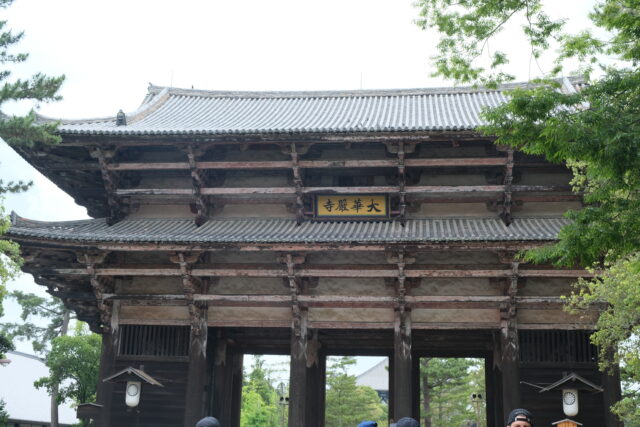
Two muscular guardians in the Great South Gate are monumental works said to have been carved in just 69 days under the direction of the sculptors Unkei and Kaikei in 1203. Both statues have a height of 8.4 meters, and are designated as a national treasure.
Open-Mouthed Form (at the left side)
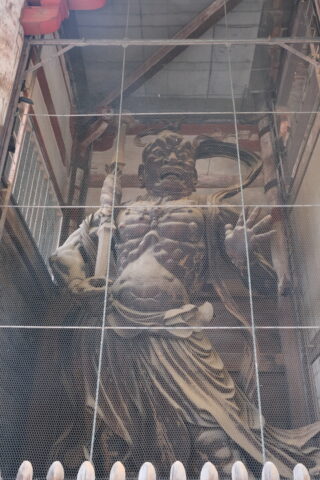
Closed-Mouthed Form (at the right side)
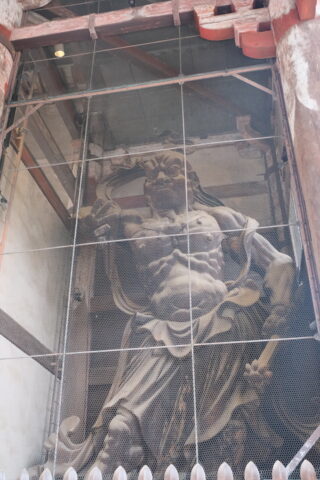
The gate has no ceilings, and you can see the frameworks of the gate up to the garret. As seen in the photos, a lot of bars pierce the giant pillars standing in a vertical direction. For that structure, the durability toward the vertical and horizontal vibration can be improved. This architectural style is called “Daibutsu style.”
The Great South Gate can be seen all day, 24 hours. Not only humans but also deer freely go and return.
Inner Gate and Cloister
After passing through the Great South Gate, you can find the Inner Gate and the roof of the Great Buddha Hall behind the gate. There is a pond named “Kagami Ike (Mirror Pond)” between the Inner Gate and the Great South Gate, and deer cheerfully and leisurely relax themselves around the pond. The Inner Gate was built in the Edo Period around 1716.
The Cloisters extend from the east and west ends of the Inner Gate and are connected to the Great Buddha Hall. Columns in these Cloisters are not entasis like those seen in Shitenno-ji or Horyu-ji, and we cannot feel the exotic mood there.
Great Buddha Hall
The main hall in which the principal image of the temple, Vairocana Buddha is housed is called “Great Buddha Hall” in Todaiji Temple. This hall is designated as a national treasure. The building has a width of 57 meters, a depth of 50 meters, and a height of 49 meters, but this scale is about three fourths compared to the original size. The hall was rebuilt in the mid-Edo Period around 1709, and after that, major repairs were made in the Meiji and Showa periods. It seems to be a two-storied building but is actually a single-storied building, similar to the Great South Gate. Look at the photo of the front face of the Great Buddha Hall. A small closed door, above the 3 big open doors through which people go in and out, is a Kanso-mado (a window through which people can see the face of Buddha). The window is usually closed and is only opened twice a year: January the first and August the 15th.
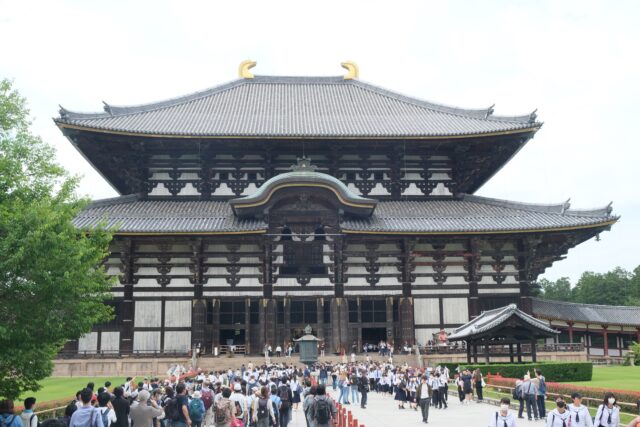
Octagonal Lantern stands in front of the Great Buddha Hall, which is the original lantern from the time of the founding of the temple, although it has been frequently repaired. It has a height of 4 meters and 64 centimeters. Four lions and 4 bodhisattvas are embossed on 8 surfaces of the lantern. It is also designated as a national treasure.
You can see Vairocana Buddha immediately when you enter the hall. It is certainly big and very dignified, but at the same time you also feel closeness to it, because you can come near to it instead of looking at it from far away.
Vairocana Buddha has a height of about 15 meters, a palm size of about 3 meters, a foot size of about 4 meters, and a nostril size through which a person can pass. It was completed in 749 and a Buddhist ceremony for the dedication of Vairocana Buddha was held. After that, the Great Buddha Hall was burned down twice but was rebuilt every time. The Great Buddha that we can see now has the head which was repaired in the Edo Period and the body part which was repaired in the Kamakura Period, but the pedestal is said to be original.
-
You can see the back side of the halo when you get bihind it.
The Great Buddha Hall has, in addition of the Great Buddha, 4 Buddhist statues.
Akasagarbha stands on the left side of the Great Buddha as a right flanking image, and Cintamani-cakra stands on the right side as a left flanking image. The two images were formed in the Edo Period. The two flanking images and the Great Buddha form a Buddha triad.
When you get behind of the Great Buddha, you can find Virupaksa and Vaisravana.


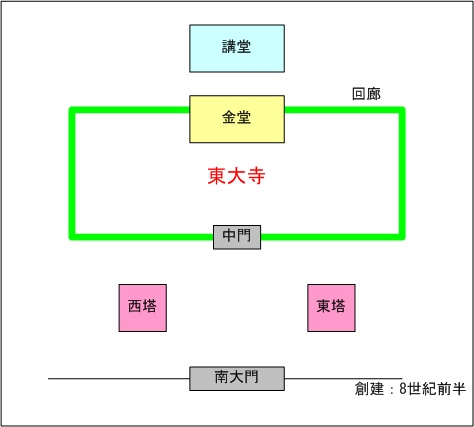
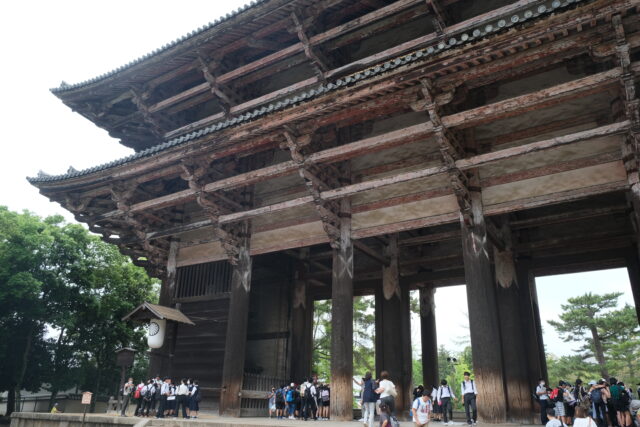
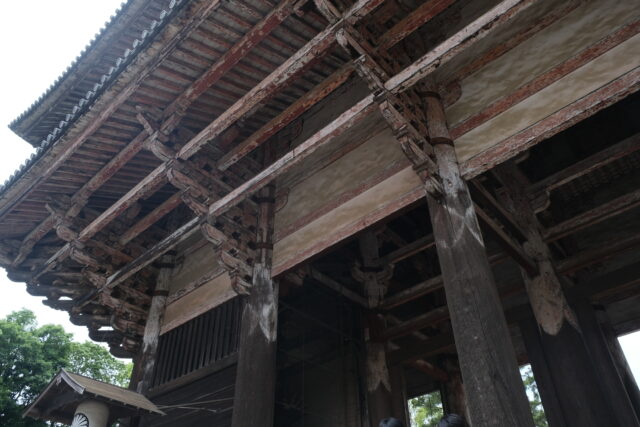
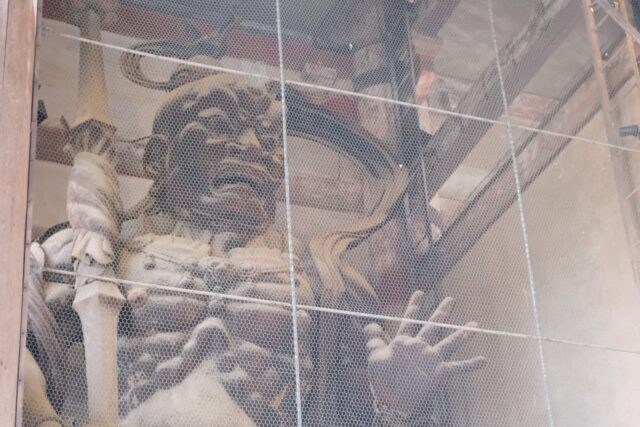
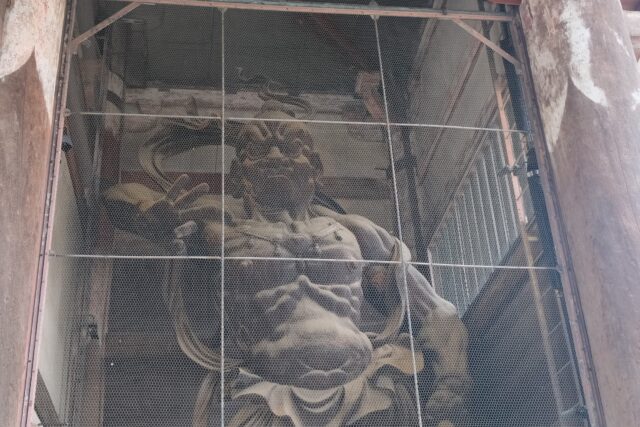
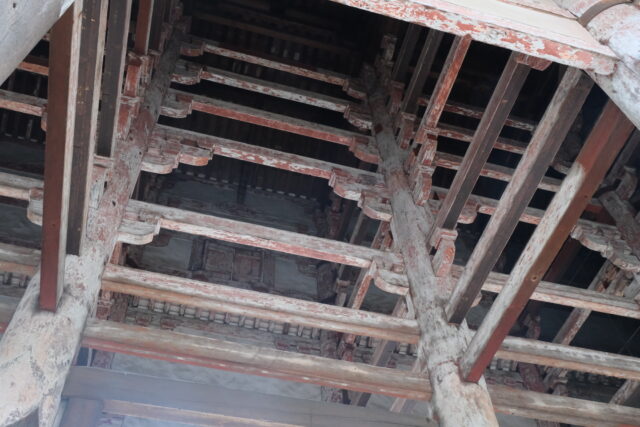
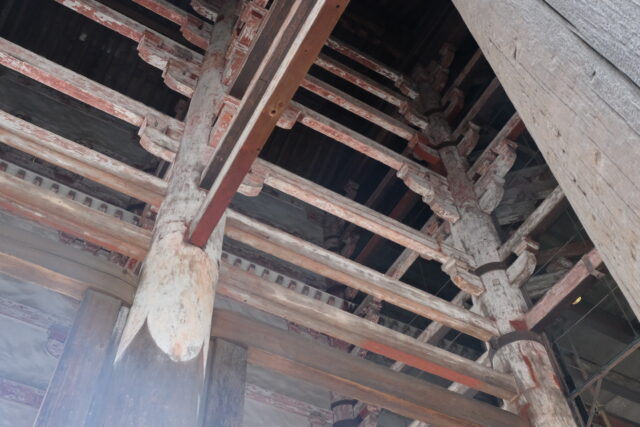
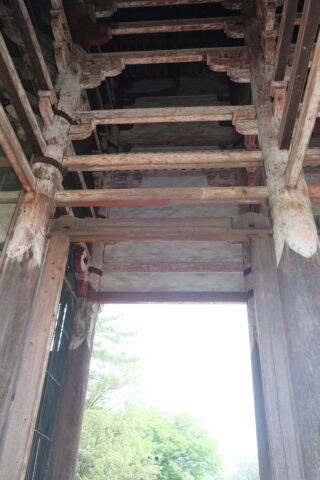
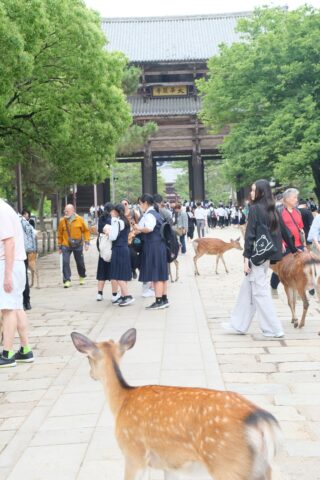
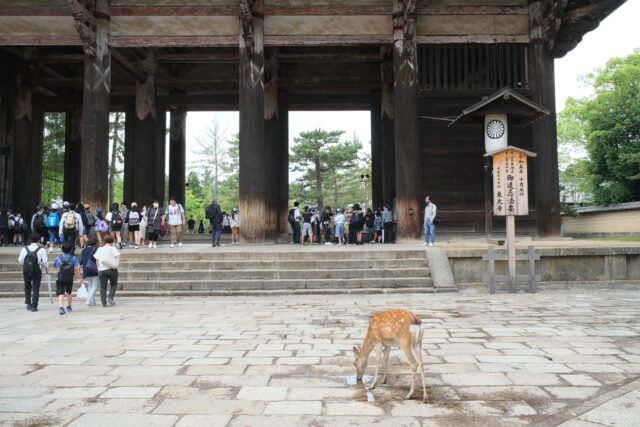
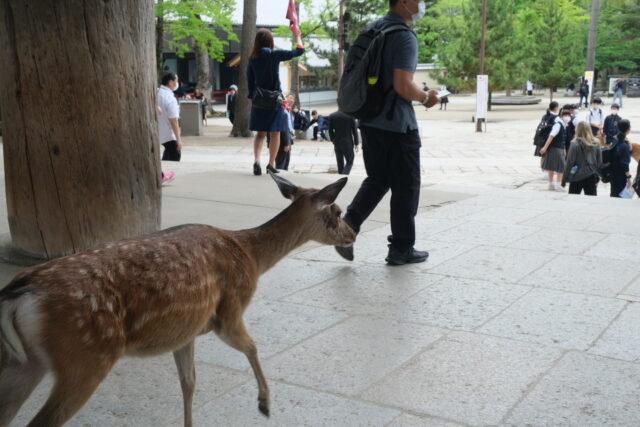
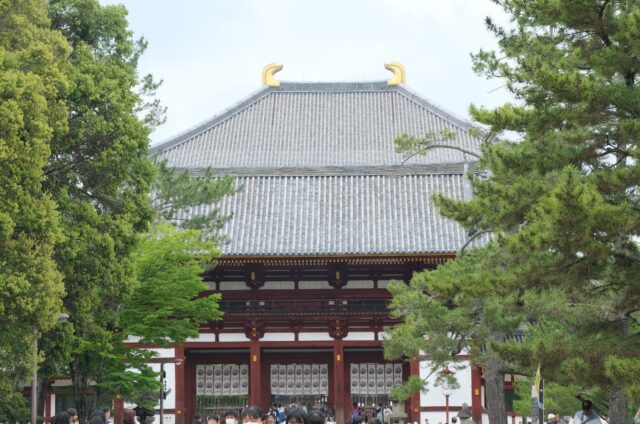
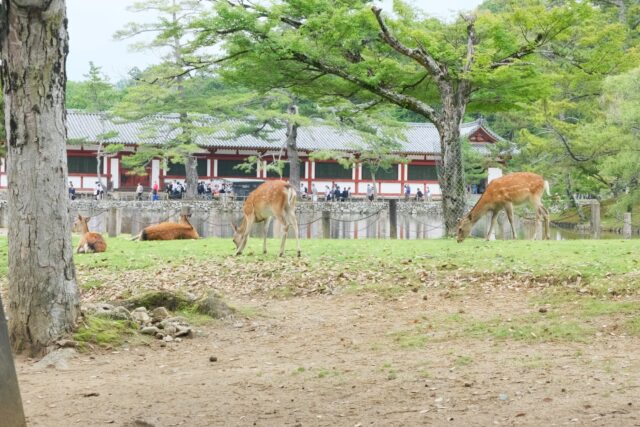
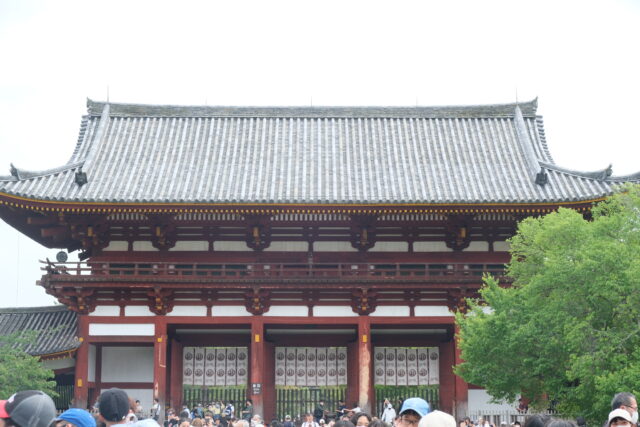
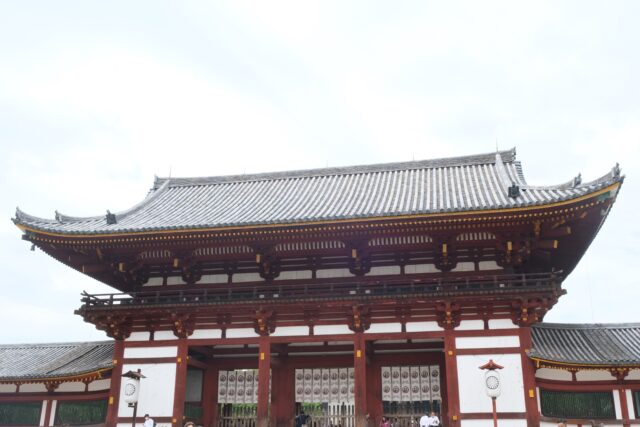
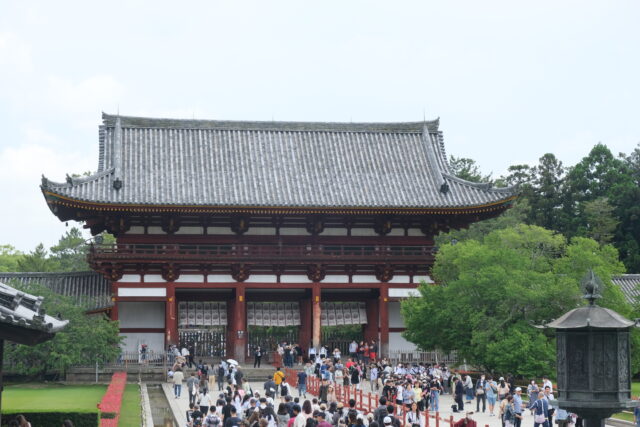
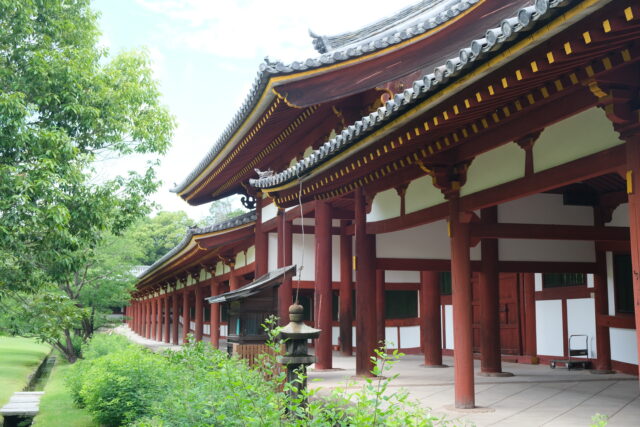
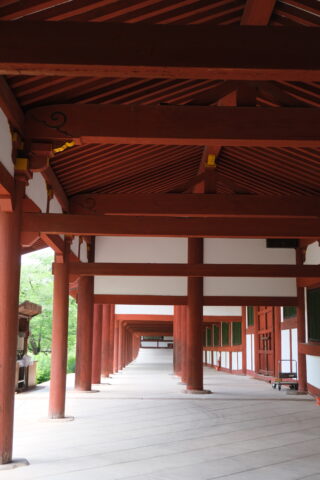
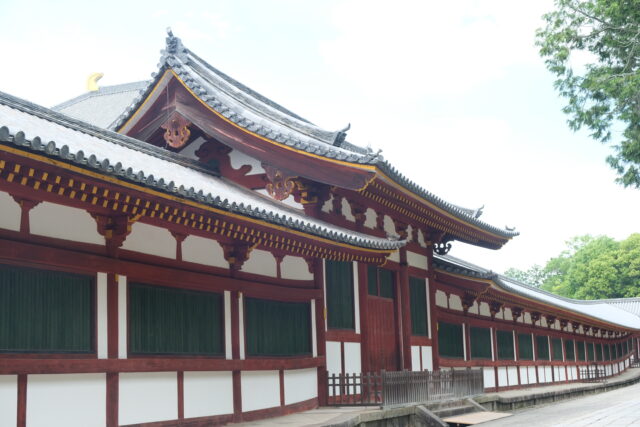

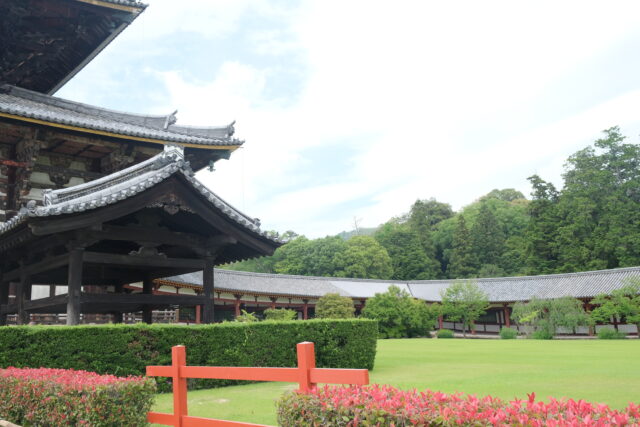
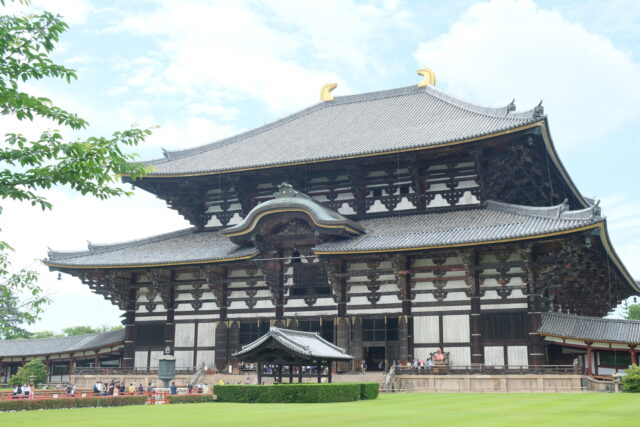
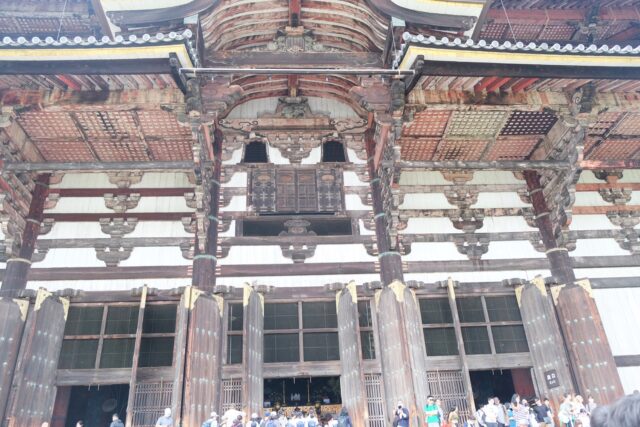
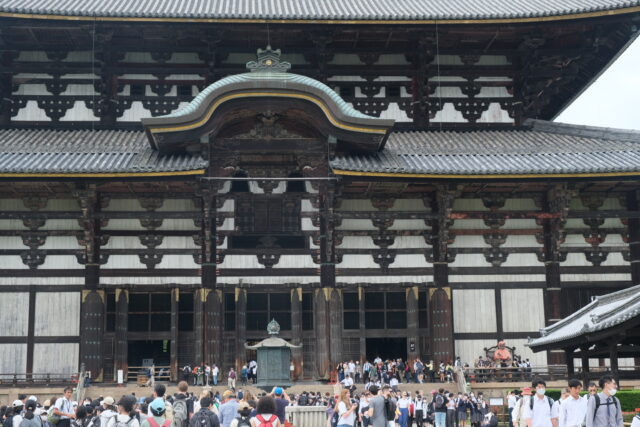
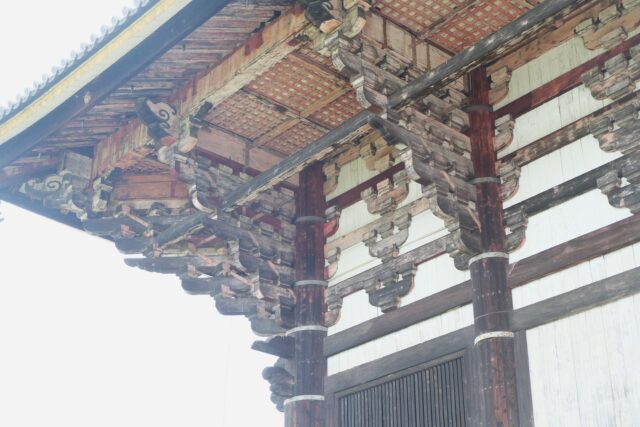
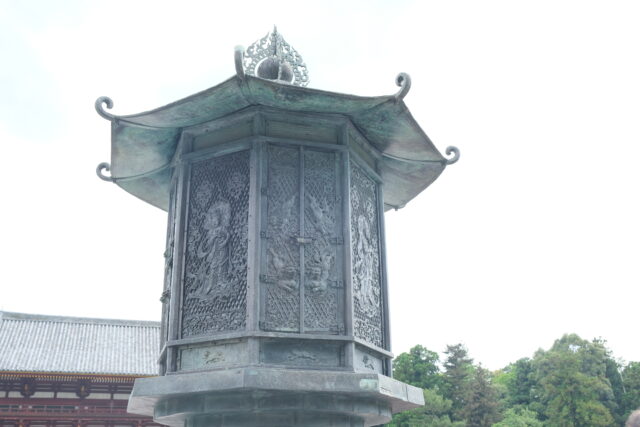
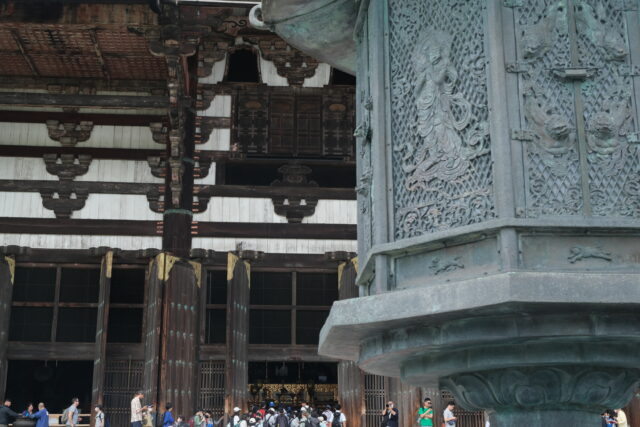
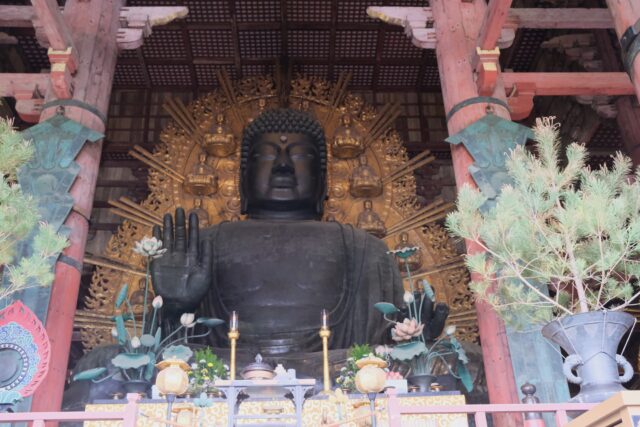
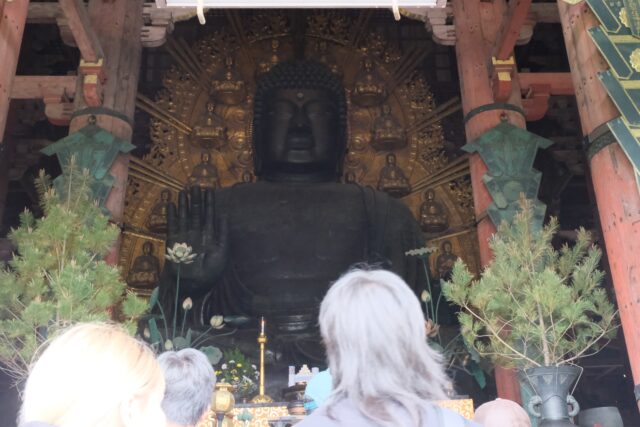
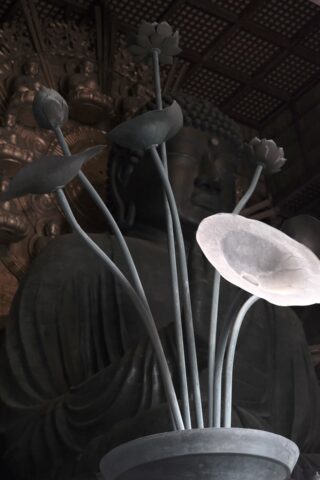
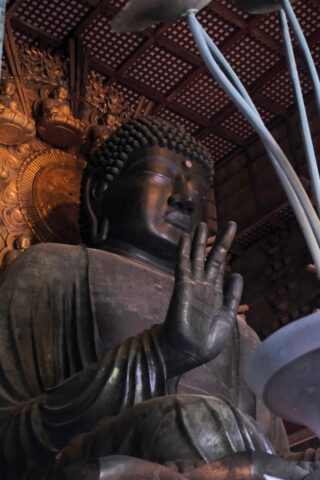
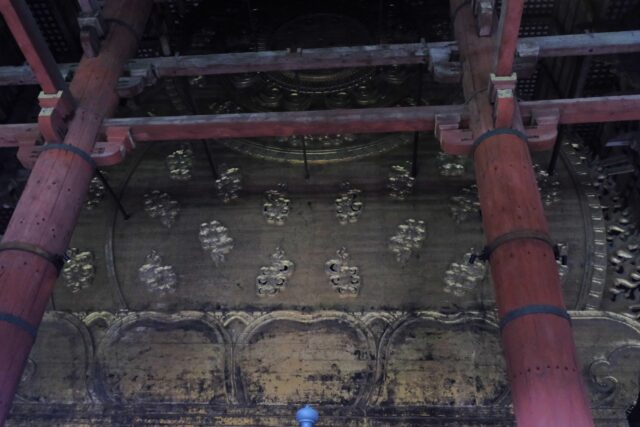

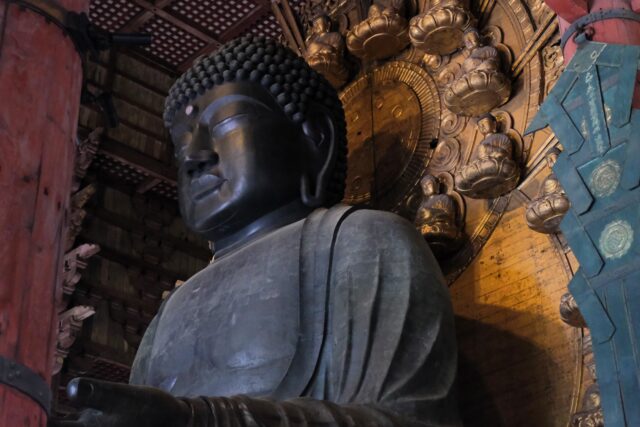
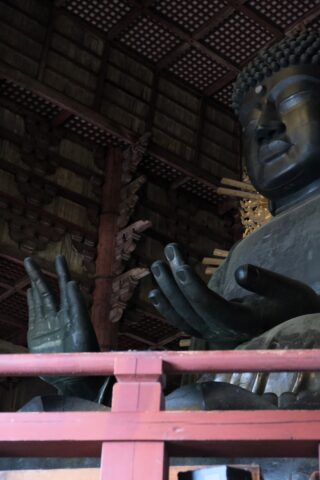
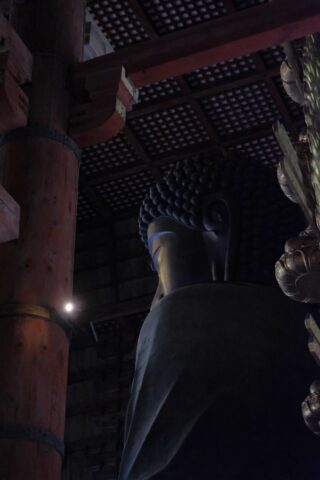
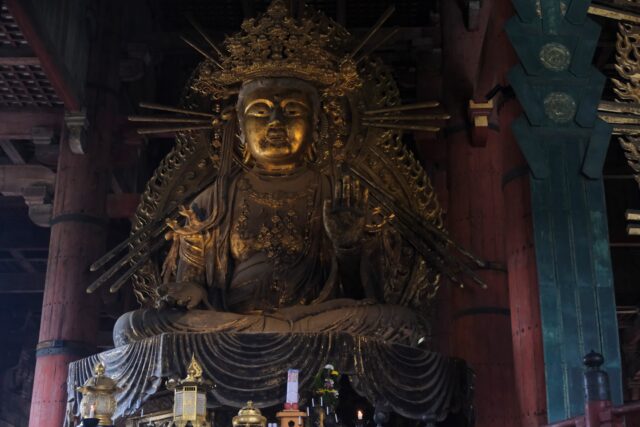
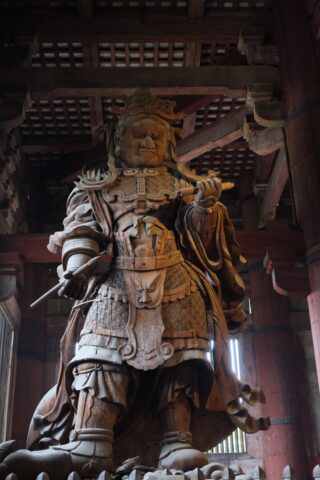
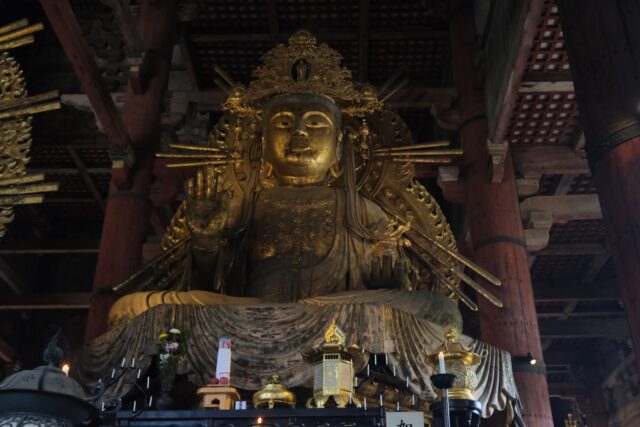
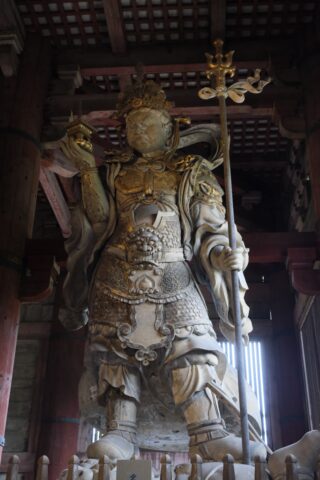
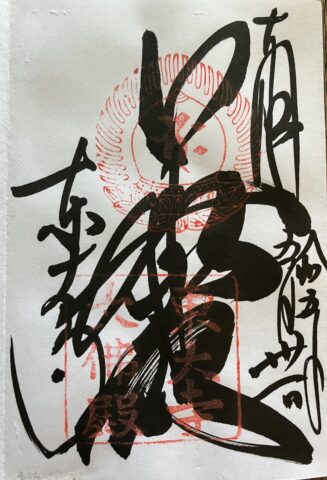
Leave a Reply